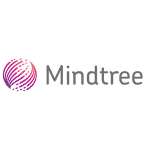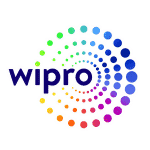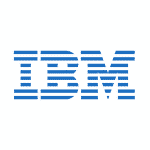
Below are the 4 Real-Time Azure live projects for Beginners
Microsoft Azure is an incredibly powerful cloud platform, and learning all of its various services and offerings can take a lot of time. Whether you’re new to Azure or just need a refresher on the basics, here are four Azure live projects that offer an amazing overview of what Azure has to offer. From web application deployment to Azure Data Factory, each project will give you a real sense of what it’s like to work with Azure and the products it offers, which will help you learn quickly and get up to speed on your new projects faster than ever before!
Are you new to Azure and eager to get some practical experience under your belt? Well, you’re in luck! In this blog post, we’ve rounded up four real-time Azure projects tailored specifically for beginners who are keen to strengthen their Azure skills. These hands-on Azure projects provide an ideal platform for you to put your Azure knowledge to the test and establish a solid foundation in cloud computing. So, let’s explore these exciting Azure projects designed for beginners and kickstart your path to becoming an Azure expert!
Azure is a cloud computing platform that offers a variety of services, including those for computing, storage, networking, and more. Microsoft’s Azure is an AI-driven cloud computing platform with services including Platform as a Service (PaaS), Infrastructure as a Service (IaaS), and Software as a Service (SaaS). In addition to analytics, virtual computing, networking, and storage, developers can use the solutions. Their existing applications can be run in the public cloud, or they can create and scale new applications using these services.
In addition to these services, Thinkcloudly offers live projects that can be used to learn about the platform and its capabilities. These four tutorials are great ways to get started with Azure.
Elevating Innovation with Live Azure Projects
Azure projects offer boundless opportunities for businesses aiming to optimize operations through cloud technology. Hosted on Microsoft’s robust Azure platform, these projects provide versatile services enhancing efficiency, scalability, and collaboration. Fueled by Azure Virtual Machines, companies access flexible computing, while Azure SQL Database ensures seamless data management. With Azure DevOps, development and deployment become frictionless. Globally distributed data centers and top-tier security ensure high availability and data protection. Tailoring Azure projects for specific needs, be it web applications, data pipelines, or AI solutions, modernizes infrastructure and fosters innovation. Embrace Azure projects to maximize resource utilization and gain a competitive edge in the digital landscape.
Project 1 – To deploy a commercial web application on Azure cloud
If you’re looking to learn how to deploy a commercial web application on Azure, this project is for you. You’ll learn how to set up and configure an Azure account, and create and manage virtual machines, storage accounts, and networking resources. Plus, you’ll get hands-on experience with deploying and managing a web application on Azure.
What is a web application?
A web application is a software program that runs on a web server, usually accessed by users through a web browser. Web applications are popular because they can be used by anyone with an internet connection. Some examples of web applications include online shopping, online banking, and social networking.
During this Live project, you can learn a lot of skills by practicing them, such as:
- Azure virtual machine
- Creating and managing Azure virtual network
- Working with load balancers such as Azure application gateway
- Custom domain
- Creating and managing Azure Network Security Group (NSG)
- Managing Azure resource group and subscriptions
- Creating and managing traffic managers
Project 2 – To implement IAM in Azure with the help of Azure AD
IAM, or Identity and Access Management, is a critical part of any cloud-based infrastructure. And what better way to learn about it than by working on a live project? In this blog post, we’ll take a look at this Azure live project that can help you get started with IAM in Azure. You’ll be creating a user’s and group’s identity in Azure AD, you will be creating dynamic groups and securing the azure environment with a conditional access policy, Identity protection policy.
Build Your Career as a
Azure Cloud Architect
- Live Projects
- Resume / Interview Preparation

What is IAM in Azure?
Identity and Access Management (IAM) in Azure is used to manage access to Azure resources. IAM consists of three components:
- Users: Users are the individual accounts that can be granted access to Azure resources.
- Groups: Groups are collections of users that can be given access to Azure resources.
- Roles: Roles are pre-defined sets of permissions that can be assigned to users or groups.
IAM is used to control who has access to what within your Azure account. It’s also important for you to understand how RBAC works with IAM.
RBAC stands for Role-Based Access Control and provides a flexible way to assign privileges based on specific tasks you want an individual user or group of users to perform in Azure. It’s best practice when working with RBAC policies not to assign more privileges than necessary as this creates less risk from human error due to having fewer accesses defined on the system.
During this Live project, you can learn the below skills by practicing them:
- Azure Device identity management: You can learn Azure AD join, Azure AD registration of devices, and hybrid Azure AD joining. You will learn how to troubleshoot the device joining issues using Dsregcmd /Status command. You will also learn managing the devices from the Azure portal such as enabling, disabling, and deleting the device, and many more things about device identity management.
- Users and Group management: You can learn how to create and manage users and groups, how security groups and office 365 groups differ, and how you can create query rules for dynamic groups. You will observe the difference between member users.
- AD Connect: Active directory connect is a tool to make a hybrid cloud it helps you to connect and sync the users, groups, and Devices from on-premise to Azure cloud. While working on this lab you will learn about Windows AD too, you can understand the difference between Azure AD and Windows AD. You can experience the on-premise infrastructure. Learn and implement PTA and PHS authentication by doing this in an Azure live project.
- Security: Conditional access policy and Identity protection policies are one of the best tools to control access and fulfill the duty of an IAM administrator by making sure there is 100 percent productivity as well as strengthening security. In this Azure live project on IAM, you will be able to create conditional access policy and Identity protection policies and observe the various behavior on the bases of controls in the conditional access policy.
- Configuring Governance and Compliance: You will also configure and manage Azure RBAC role for providing fine-grained access to resources on the bases of Roles such as Owner, Contributor, Reader, Deletion, etc..
Project 3 – To implement Monitoring services and perform cloud cost optimization
Azure provides a ton of different services that can be used to monitor your applications and services. You can use these tools to optimize your costs and get alerted when something goes wrong. In this project, you’ll learn how to set up monitoring services and perform cloud cost optimization. This is a great way to learn about Azure and how it can be used in the real world. Plus, it’s a great way to get started with cloud computing.
Boost your earning potential with Azure expertise. Explore our certified Azure Courses for a high-paying career
- Explore Azure DevOps Certification
Azure Monitoring
Azure Monitor is a great way to keep an eye on your web app’s performance. You can set up alerts to notify you when something goes wrong, and view detailed information about request and response times. Plus, you can use Azure Monitor to monitor other aspects of your app, like database performance or disk usage.
Monitoring tools are essential in every scenario, be it a small company or a large enterprise. This is a prioritized metric since it is important to monitor various components integrated into a business application to understand whether they are functioning properly.
Monitor, analyze, and act on telemetry data from your Azure and on-premises environments. Azure Monitor helps you maximize the performance and availability of your applications and proactively identify problems in seconds.
Azure Cost Optimization
If you’re looking to optimize your Azure cloud costs, this Real-Time Azure live project helps you get started. Azure cloud Cost Management is a great tool for getting started with cloud cost optimization. It provides you with an overview of your spending, helps you identify and fix overspending, and provides recommendations on how to optimize your costs. Azure Monitor is another great tool for cost optimization.
With it, you can monitor the performance of Azure resources as well as provide alerts when they deviate from expectations. You can also use it to configure alerts in advance so that they are automatically triggered when conditions exceed predefined thresholds.
During this project, you can learn the below skills by practicing them:
- Azure Monitor: Configure and manage the Azure monitor tool. Use this Microsoft Application Insights suite, you can see and diagnose issues across different applications and dependencies. You can see the infrastructure problems that correlate with those caused by virtual machines and containers. Gain the ability to inspect your monitoring data by drilling into Log Analytics.
- Azure Advisor: In this Azure live project on monitoring we can learn how to find and fix problems with resources before they impact your business. You will also learn about new features and services that can help you improve your productivity. Understand how to optimize your resource utilization and save money.
- Azure Sentinal: It helps you detect, investigate, and respond to threats across your entire environment. By using Azure live projects, you can get hands-on experience with this tool. Plus, you can learn from the pros and see how they use Azure Sentinel in the real world. Here are four great examples.
- Azure cost optimization: Azure provides a lot of features and services that can help you optimize your costs. In this Azure live project, it shows how to take advantage of those features and save money on your Azure bill. It also covers the different ways to lower the cost of using Azure.
Project 4 – Copy data from a SQL Server database to Azure Blob storage using Azure Data Factory
This project will teach you how to use Azure Data Factory to copy and transform data in an Azure SQL Database. You’ll learn how to create an Azure Data Factory pipeline and configure it to run on a schedule. Plus, you’ll learn how to monitor the pipeline and view the data that’s been copied and transformed.
What is Azure Data Factory?
Azure Data Factory is a cloud-based data integration service that allows you to create data-driven workflows for orchestrating and automating data movement and data transformation. It offers a rich set of built-in connectors that can connect to all popular on-premises and cloud-based data sources such as relational databases, NoSQL databases, flat files, and Azure Data Lake Store.
You can use this system to extract the required data from any source, transform it in any way necessary (including filter, merge, or aggregate), and load it into another target location such as an Azure SQL database or HDInsight cluster. You also have the option of using prebuilt templates from the Gallery to get started with your project quickly.
During this project, you can learn the below skills by practicing them:
- Azure Data Factory: In this project, you can learn how to create workspaces for Azure data factory. You also will observe how to use several pipelines to copy and transform data.
- Azure storage account: Learn how to store and retrieve data. You can use an Azure storage account to store any type of data, including blobs, files, queues, and tables. Plus, you can access your data from anywhere in the world via the Internet.
- Azure SQL Database: You will learn how to create and configure Azure SQL Database.
Interested in Live projects please check out the special Azure live projects course created by industry experts.
Azure is really interesting to study and it lands you in your dream company. Our students with experience in Azure are making $100,000 on average. Explore our more free resources on Azure:
- Practice with Azure live project training.
- Read the blog over Azure live projects.
- Read top Azure interview questions and answers.
- Don’t forget to register for our free zoom webinars on Azure.
- Browse our YouTube Videos On Cloud Computing










